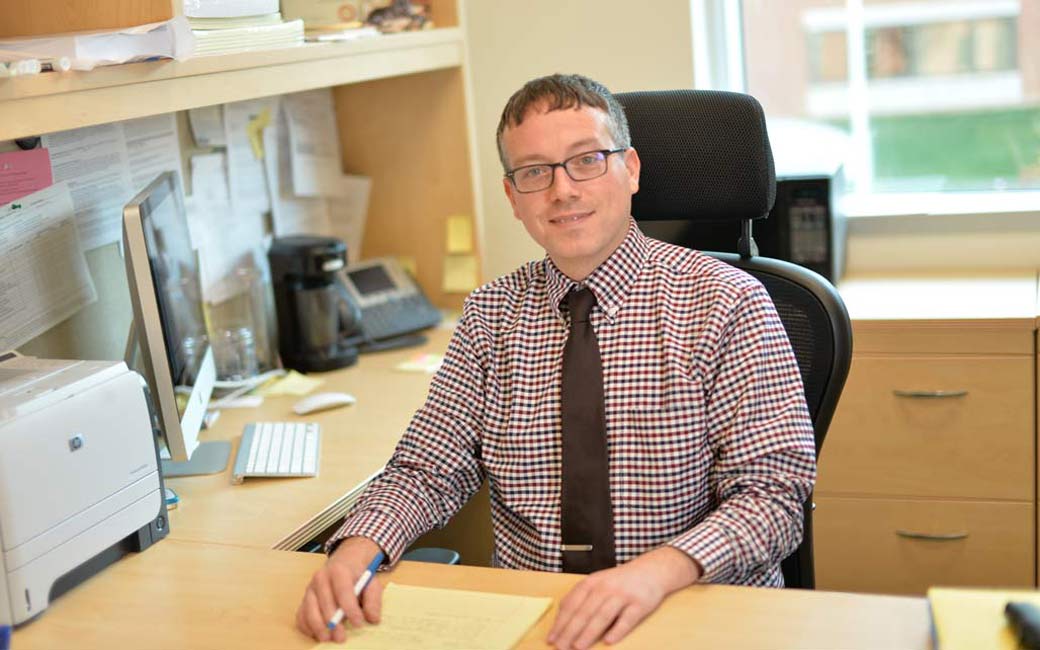Understanding racial inequality
Professor John McTague, who leads by example, believes his students learn best when they are personally connected to the material.

John McTague believes that sometimes his students learn best when they’re nowhere near a campus classroom.
That’s why his course exploring racial and economic inequality requires them to do community service in some of Baltimore city’s poorest neighborhoods.
Partnering with the non-profit veterans group The 6th Branch, classmates (and McTague, who leads by example) pick up trash, tend an urban farm and help repurpose vacant lots. In the process, says McTague, “they get a much deeper connection to the material,” than they would just reading about it.
“I think they care a lot more about what they’re studying,” observes the professor, “when they have this personal experience.”
And he sees that experience have a big impact as students solidify or even completely change their career goals as a result. Some choose to pursue areas, such as social work, public policy and education, after taking the class.
“ I love that at Towson, the emphasis is on teaching. ”
McTague is grateful to work at a university that values preparing students both to enter the job market or graduate school, and to develop as socially responsible citizens.
“I love that at Towson, the emphasis is on teaching,” says McTague, who points to the small class sizes that support individualized instruction.
“I get up every morning, and teaching is the first thing I think about … It is my first priority.”